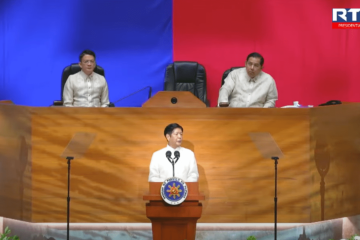
DESPITE THE lifting of the COVID-19 state of emergency, the University of Santo Tomas will retain its hybrid mode of instruction for the academic year 2024-2025 to maximize the use of technology in delivering classes.
In an email interview with The Flame, Vice-Rector for Academic Affairs Prof. Cheryl Peralta said the ratio of onsite to online classes next academic year would still depend on the University’s respective academic units while following minimum government regulatory requirements.
“The decision on the proportion of online and onsite hours will still be based on the program outcomes needed to be developed among students, as well as the most efficient combination of schedules in consideration of course offerings per year level, faculty, and facilities,” Peralta said.
According to Peralta, the schedules of students would also be determined by the needs and resources of their academic discipline.
“We will continue to improve our implementation of hybrid instruction especially as we intend to maximize opportunities to integrate emerging technologies into teaching and learning,” she added.
UST began implementing a ratio of 50:50 onsite to online classes in January last year in line with the Commission on Higher Education’s (CHED) memorandum requiring higher institutions to hold at least half of their learning hours onsite.
In a memorandum dated Feb. 23 last year, the University said the use of UST Cloud Campus and other technology tools would enhance instruction through hybrid learning, adding that the modality would also be used as a contingency plan when onsite classes are not possible.
Since the transition, the University has launched an integrated version of the MyUSTe portal to provide users with all-in-one access to UST’s online services and applications via one centralized web directory. It also replaced learning management system Blackboard with Canvas after two decades, a move that UST said would improve the efficiency of content-sharing and achieve learning outcomes.
A CHED memorandum also said using technology in flexible learning would upskill the students, faculty, and staff, which the agency said was “necessary” in the digital environment.
“While the resumption of onsite learning is highly desirable, it must also be noted that hybrid learning is here to stay, especially that [HEIs] have already made strides in upgrading facilities, learning tools, and materials,” CHED Memorandum Order No. 4, Series of 2023 read.
Critics of hybrid learning, including the Alliance of Concerned Teachers, have raised concerns about the effectiveness of the set-up in schools, saying it should not be viewed as a solution to problems in the education sector. F



